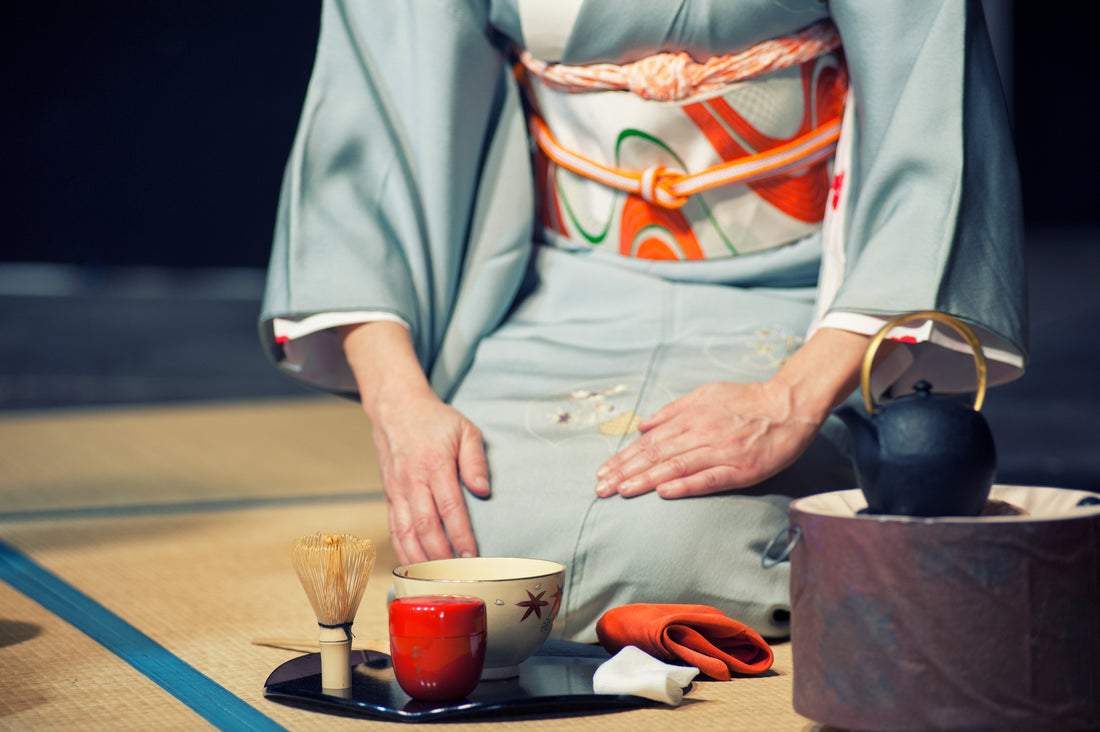Tea ceremonies, chanoyu (茶の湯) or sado (茶道), are one of most traditional and cultural experiences Japan has to offer. Whether you are a tea connoisseur or interested in Japanese culture, there is plenty to enjoy in this age-old custom. Here we will give a detailed explanation on the meanings and activities of a traditional Japanese tea ceremony,
What are Tea Ceremonies?
The Japanese tea ceremony is a centuries-old practice rooted in Zen Buddhism and the principles of wabi-sabi – the appreciation of imperfection and impermanence. At its core, the tea ceremony is a ceremonial way of preparing and serving matcha, powdered green tea, with meticulous attention to detail and etiquette.

Cultural Relevance
Japanese tea ceremonies can be traced back to the 9th century upon the introduction of tea from China by Buddhist monks. Fastforward to the Muromachi period (1336-1573), and we see tea ceremonies begin to take a more distinctive form, largely influenced by Zen Buddhism. The 16th century ushered in a golden age of tea ceremonies, with the renowned tea master Sen no Rikyū refining the practice into an art form that emphasized simplicity, naturalness, and the beauty of imperfection. Specifically, we see here that the four key principles within tea ceremonies be established as follows:
Core Principles
- Wa (和) - Harmony: The ceremony fosters a sense of harmony between the participants, the utensils, and the environment.
- Kei (敬) - Respect: Mutual respect is shown through the careful handling of utensils and the interaction between host and guests.
- Sei (清) - Purity: The act of preparing and drinking tea is seen as a way to purify the mind and soul.
- Jaku (寂) - Tranquility: Achieving a state of inner peace and tranquility is the ultimate goal of the tea ceremony.
As time passed tea ceremonies evolved into a social and cultural phenomenon, embraced by samurai warriors, aristocrats, and commoners alike. Today, tea ceremonies continue to be celebrated as a cherished tradition, offering a moment of tranquility from the hustle and bustle of modern life. Whether held in a traditional tearoom (茶室 - chashitsu) or a contemporary setting, the tea ceremony remains a symbol of refinement, hospitality, and simplistic beauty.

What Happens during the Ceremony?
A tea ceremony is a carefully choreographed ritual that occurs over several stages, each holding symbolic meanings and significance. First, participants gather in a traditional tearoom with tatami mats, sliding doors, and seasonal decorations. They then must sit on the tatami with their thighs resting on their calves (as pictured below) and await to partake in the ritual of preparing and enjoying matcha.
The host, known as the "teishu," begins by purifying the utensils and preparing the matcha with precision and grace. The guests, seated in a specific arrangement known as the "chaji," observe the ritual as the tea is whisked using centuries old methods and practices.
Once the matcha is prepared, it is served to the guests. The act of drinking the tea becomes a meditative experience, as participants focus on the taste, aroma, and texture of the matcha. In accordance with the principles of tea ceremonies, participants are encouraged to drink with appreciation of not only the tea but the surrounding environment as well.
Tea and Atmosphere
The tea used in the ceremony is finely ground matcha, a powdered green tea renowned for its vibrant green color and rich flavor. Matcha is made from shade-grown tea leaves that are carefully harvested, steamed, dried, and ground into a fine powder. The result is a smooth, velvety tea with a delicate balance of sweetness and umami, perfect for savoring in the tranquility of a tea ceremony. This matcha is different than ones you would find in a Starbucks or local coffee store, as it is specifically cultivated to serve this purpose.

As for the atmosphere, the tea ceremony is conducted in a traditional and contemplative setting, with attention paid to every detail to create a sense of harmony and tranquility. The tearoom is adorned with seasonal decorations, such as flowers and scrolls, and the lighting is soft and subdued to evoke a sense of intimacy and introspection. The guests are encouraged to immerse themselves fully in the moment, letting go of distractions and embracing the simple beauty of the tea ceremony.
Where to Participate in Japan

For travelers visiting Japan, experiencing a traditional tea ceremony is a must-do cultural activity. Many tea houses, temples, and cultural centers across Japan offer tea ceremony experiences for visitors, allowing them to immerse themselves in this ancient tradition.
There are various places, mainly centralized in Kyoto and Tokyo, that offer great opportunities for foreigners to partake in tea ceremonies led by knowledgeable tea masters. In general, Kyoto is regarded as the cultural capital of Japan, so you might find more preferable options there should you desire the most traditional experience. However, each teahouse has their own different styles and schools, so be sure to pick the one you think best suits your preferences and schdule.
Whether you're a tea aficionado or a curious traveler seeking to delve into Japanese culture, a tea ceremony offers a glimpse into the soul of Japan – a world of tradition, calmness, and timeless beauty.

